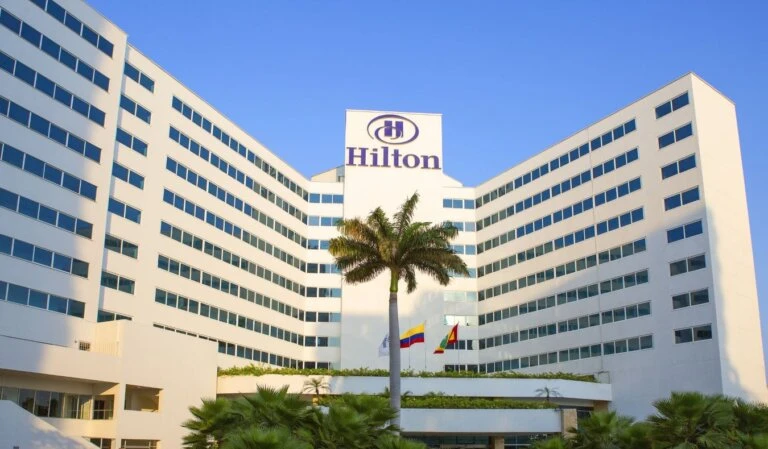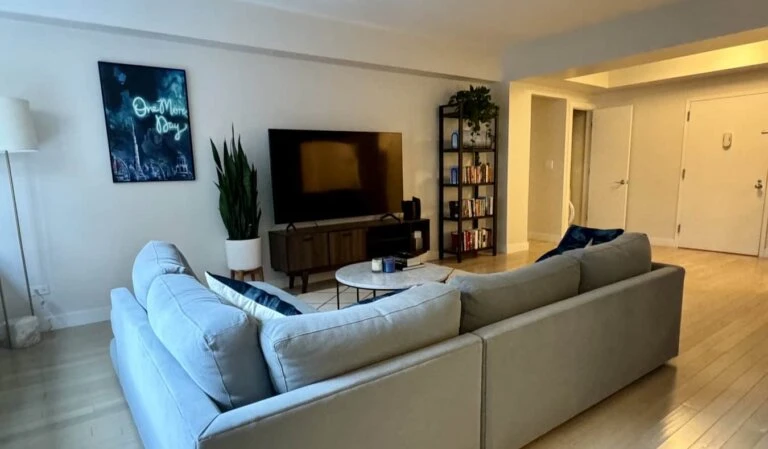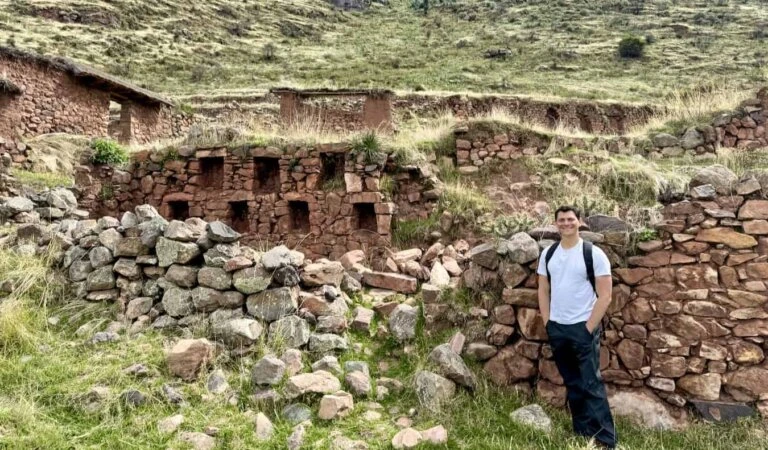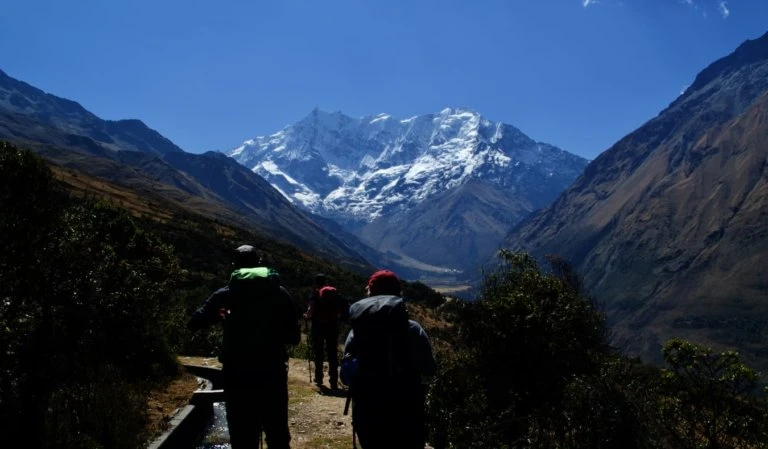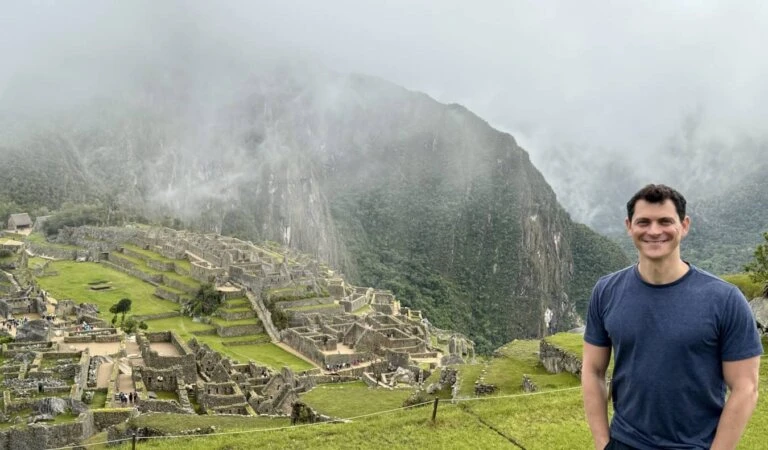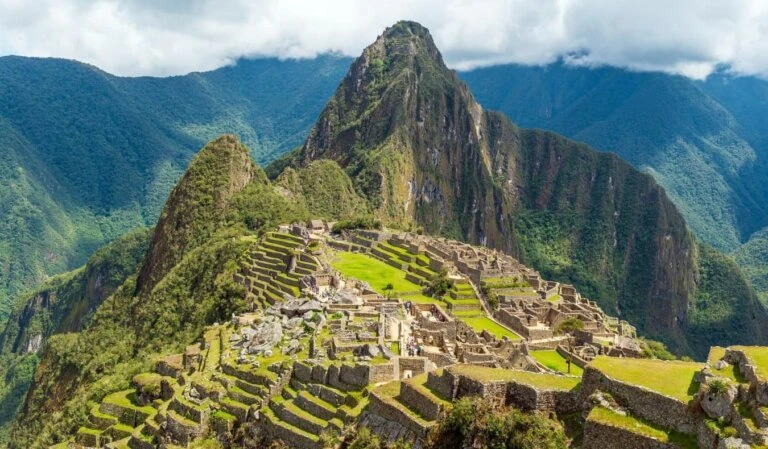
Hiking the Inca Trail
How to Hike the Inca Trail: Your Guide to an Epic Adventure
Machu Picchu? Oh, it's like the ultimate dream on everyone's bucket - list! Sure, lots of folks just do a day - trip, but hey, why not take the more adventurous route and hike the Inca Trail? It's a super - challenging multi - day trek through the Peruvian jungles. In this guest post, my pal Gillian is gonna spill all the beans about her amazing trek, and also give you some nifty tips to help you plan your own trip to this wonder of the world.
Hiking to Machu Picchu: A Year - Highlight
Hiking to Machu Picchu along the Inca Trail in Peru? That was hands - down the highlight of my year of traveling. Standing there, looking out over those Andes peaks, and thinking, "I hiked all the way here!" It just filled me with so much joy and awe. I was like, "This is the place to be, no doubt!" Now, I won't sugar - coat it. It was a lot of work. Like, a TON of work. But seriously, it was 100% worth it.
The Mysterious Machu Picchu
Machu Picchu is way up there, about 2,500 meters (8,200 feet) above sea level. It was an Inca citadel built way back in the 15th century. They built it as a royal estate, but those poor Incas only got to use it for less than 100 years. Then the Spanish showed up, all set on conquest, and boom, it got abandoned.
It wasn't until 1911 that archaeologist Hiram Bingham III re - discovered it. The locals knew about it, but it was when Hiram trekked up that mountain himself that he was like, "Whoa, this is spectacular!"
Machu Picchu Entrance: Limited Tickets, Big Demand
To keep tourism from trashing the place, in 2024, they're only letting 4,500 people into Machu Picchu each day. They split the tickets into three time slots: early morning (6 - 8 am), morning (9 - 11 am), and afternoon (12 - 2 pm). Sounds like a lot, right? But tickets sell out months in advance, especially for the hike. There are 4 main circuits now, and you gotta have a guide with you. So, plan ahead, do your homework, and book early!
Hiking the Inca Trail: Itinerary
Day 1: A Gentle Start
The first day was like a warm - up. We started on a wide path that went through the Sacred Valley. They call it "Inca Flat." The trail runs alongside the Urubamba River and meanders through trees and scrub brush. It slowly gains altitude. Our guide, Marco, was awesome. He stopped us at different spots to tell us all about the trail's history, the ruins along the way, and the Incan people and their struggles. And this guy wasn't just spouting guide - book stuff. He'd studied at uni and hung out with Incan descendants in the mountains. His knowledge was deep!
Day 2: The Big Climb
We woke up at 5 am to all the commotion outside. A porter brought me hot tea, and another brought hot water and soap for a wash. I drank my tea, washed up, and packed my few things (the porters carry everything else). It was cold when we started. Frost on the trail, and I could see my breath with every hard breath. We could already feel the altitude, and we still had over a thousand meters to go. We quickly climbed above the tree line and got treated to these stunning views of mountains and valleys that stuck with us all day.
The climb to Dead Woman's Pass? Non - stop. Up, up, up along those huge stone steps of the ancient Inca pathway. My heart was pounding, my lungs felt too small, and my legs were like cement. Then, it was down the other side, a 600 - meter drop. I thought it'd be easy, but controlling those wobbly legs was a whole workout. In the afternoon, we climbed another 400 meters before dropping into a more jungle - like valley. We crossed the valley to our campsite overlooking some astrological ruins. Fog rolled in as it got dark, giving the place an eerie but warm feel. After 16 kilometers of hiking through two passes, a little of that special "rum tea" and we were out like a light.
Day 3: Downhill All the Way (Almost)
Day 2 was about climbing, and Day 3 was all about going down. We dropped almost 800 meters. I'm not sure if going up or down is harder, but my legs were sorer after this day. Good thing I had my walking stick! We dropped back through the tree line into jungle - like scenery. You could really see how Machu Picchu was hidden for so long. We shared camp with other groups that night. Showers and beer were much - needed before a late dinner and early bedtime. The next day, we'd see the Sun Gate and Machu Picchu!
Day 4: The Big Reveal
Reaching the Sun Gate was mind - blowing. Looking through it at Machu Picchu below, all the hardships of the trek just vanished. Machu Picchu looked exactly as beautiful and mysterious as I'd imagined. Wandering around the site, I was in total awe of how the ancient Incans built this amazing city without any modern machinery. Their ingenuity and precision were just out of this world. The buildings and stonework? Stunning displays of form, function, and crazy - good astronomical and geographic knowledge. Stones were placed or carved to line up with the sun's solstice positions or geographic lines. Seeing that Incan Cross - shaped rock and how it matched a compass was like, "Whoa, these guys knew their stuff!" The whole city and the mountain backdrop took my breath away.
Tips for Hiking the Inca Trail
Before You Go
Arrive Early: Try to get to Cusco 3 - 5 days before your hike. It'll help you get used to the altitude, and your hike will be a breeze!
Leave the Stick Behind: Hiking poles or sticks aren't allowed in Machu Picchu, unless you're elderly or disabled.
Chew Coca Leaves: If the altitude is kicking your butt, chew some coca leaves. It's a local remedy that the guides and porters use. You can chew the leaves or get coca gum. (You can also get altitude medicine from your doc, but be prepared to pee a lot!)
Break in Your Boots: Buy and break in your shoes at least 1 - 2 months before your trip. No one wants blisters!
On the Trail
Sunscreen and Bug Spray: Don't get a sunburn while hiking, and those mosquitoes are everywhere. Apply both every day.
Band - Aids/Blister Kits: Your feet will take a beating. Some basic first - aid supplies will come in handy.
Extra Snacks: You'll get food on the trail, but bringing your favorite snacks is a great mood - booster for the tough parts.
Go the Extra Mile: Hike an extra hour to Huayna Picchu for an amazing view of Machu Picchu. It's a bit of a scramble, but so worth it!
Train Up: This hike is no joke. You don't need to be an Olympic athlete, but the more you train, the easier it'll be.
Skip the Showers: There are showers on the hike, but the water is freezing. Just embrace your "hiker's perfume."
Extra Batteries: Bring an external charger for your phone and extra camera batteries. You don't want to miss out on Machu Picchu pics!
Earplugs: The Inca Trail can get crowded, and camps can be noisy. Earplugs are a must.
Consider the Salkantay: If you want a less - busy route, try the Salkantay. It has epic views, fewer tourists, and it's cheaper!
Bathroom Money: Make sure you have some cash for the bathroom at Machu Picchu. It costs a couple of soles.
Get Stamped: You can get your passport stamped with a special Machu Picchu stamp. It's a fun souvenir!
Check Your Bag: You can only bring a day bag under 20L into Machu Picchu. Bigger bags need to be checked at the gate.
How to Get to Machu Picchu: Prices, Tours, and Logistics
By Train
If you're not up for the Inca Trail hike, the easiest way from Cusco to Machu Picchu is to take the train from Ollantaytambo to Aguas Calientes. Tickets cost between 225 - 1,800 PEN, depending on how fancy you want to go. The Expedition (the cheapest option) is just fine. You see the same sights. Just bring your own drinks and snacks. You can book tickets at Peru Rail.
Site Conservation and Tours
The government is trying to conserve the site, so they've introduced three circuits and timed entries. You need to book tickets in advance and have a licensed guide. (Sometimes they might let you in without one, but since there are no signs, a guide is way better.)
If you want to hike the Inca Trail, you must go with a licensed guide. The company will arrange the permits for the trail and the ruins. Make sure the company treats its porters well. Porters have a tough job. You'll also need cash to tip them. Most people tip around 25 PEN per person per day for porters and 50 PEN per person per day for guides. The company will probably give you more tipping guidelines.
Multi - day treks start at $700 USD. If you want a cheaper tour, head to Cusco and wait for a last - minute spot. People cancel all the time, and you can usually get a spot for less. But if you're on a tight schedule, pre - book your tour.
Plan Your Trip to South America
Get all my top travel tips and FREE planning guides sent right to you. See more of South America for less!
Book Your Trip to Peru: Logistical Tips and Tricks
Book Your Flight
Use Skyscanner to find a cheap flight. They search everywhere, so you know you're getting the best deal.
Book Your Accommodation
Book your hostel with Hostelworld. They have the most options and great deals. If you want something other than a hostel, use Booking.com for the cheapest guesthouse and hotel rates.
If you're looking for hostels in Cusco, here are my favorites.
Don't Forget Travel Insurance
Travel insurance is a must. It protects you from illness, injury, theft, and cancellations. I never travel without it. My top picks are:
Safety Wing (good for everyone)
Insure My Trip (for those over 70)
Medjet (for extra evacuation coverage)
Looking for the Best Companies to Save Money With?
Check out my resource page for the best companies to use when you travel. I use them to save money, and you can too!
Want More Information on Peru?
Visit my detailed destination guide on Peru for even more planning tips!

